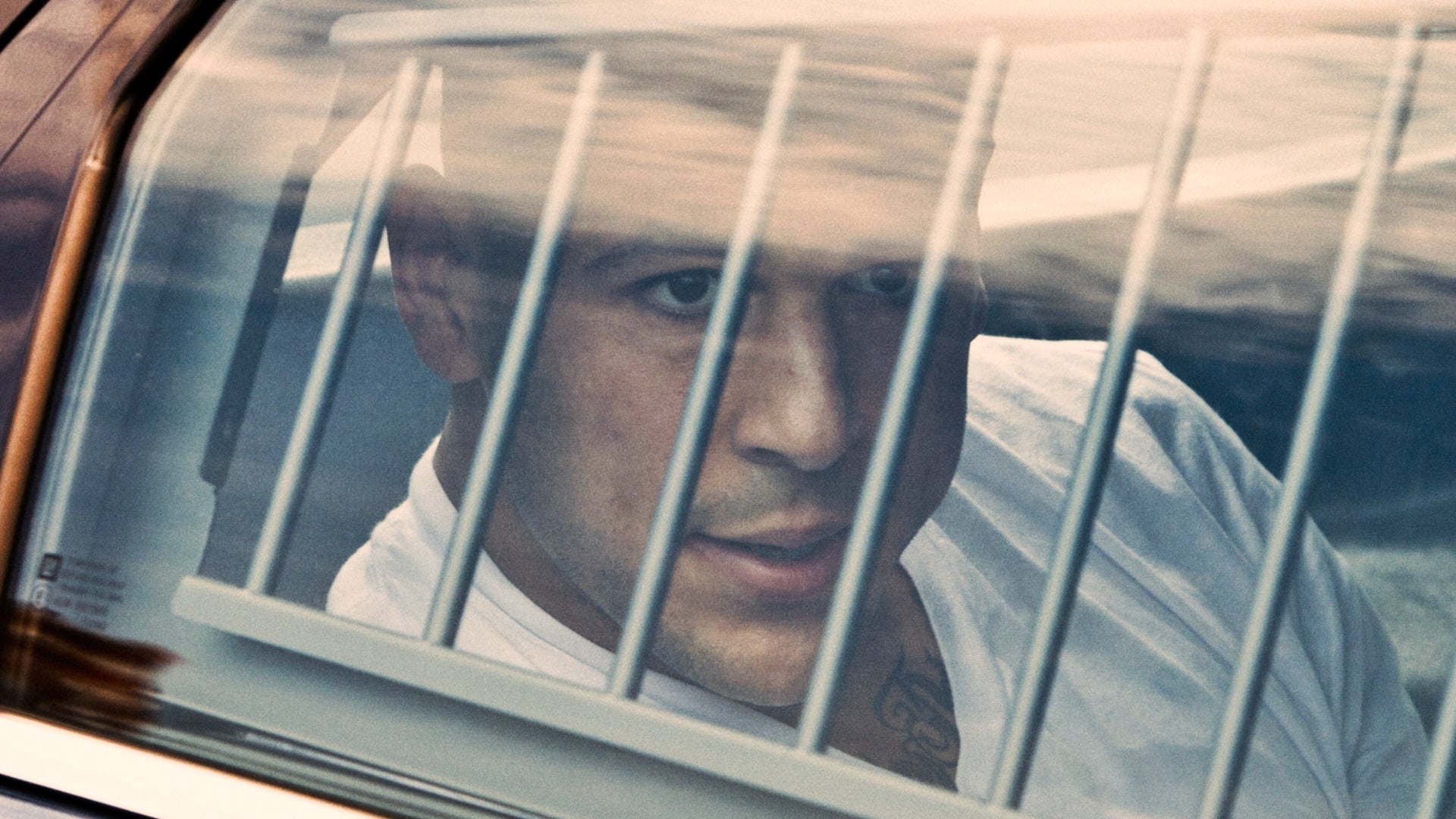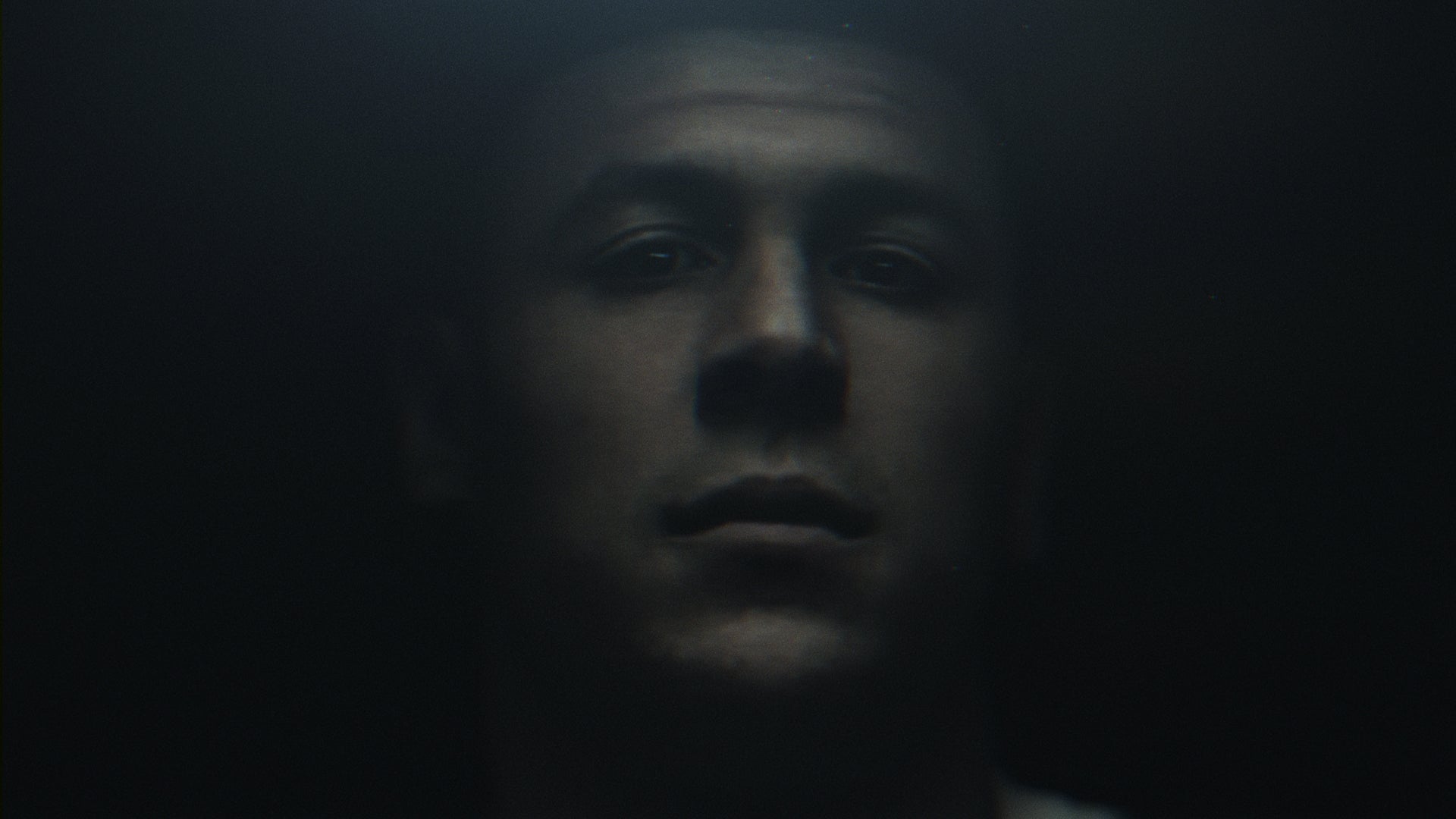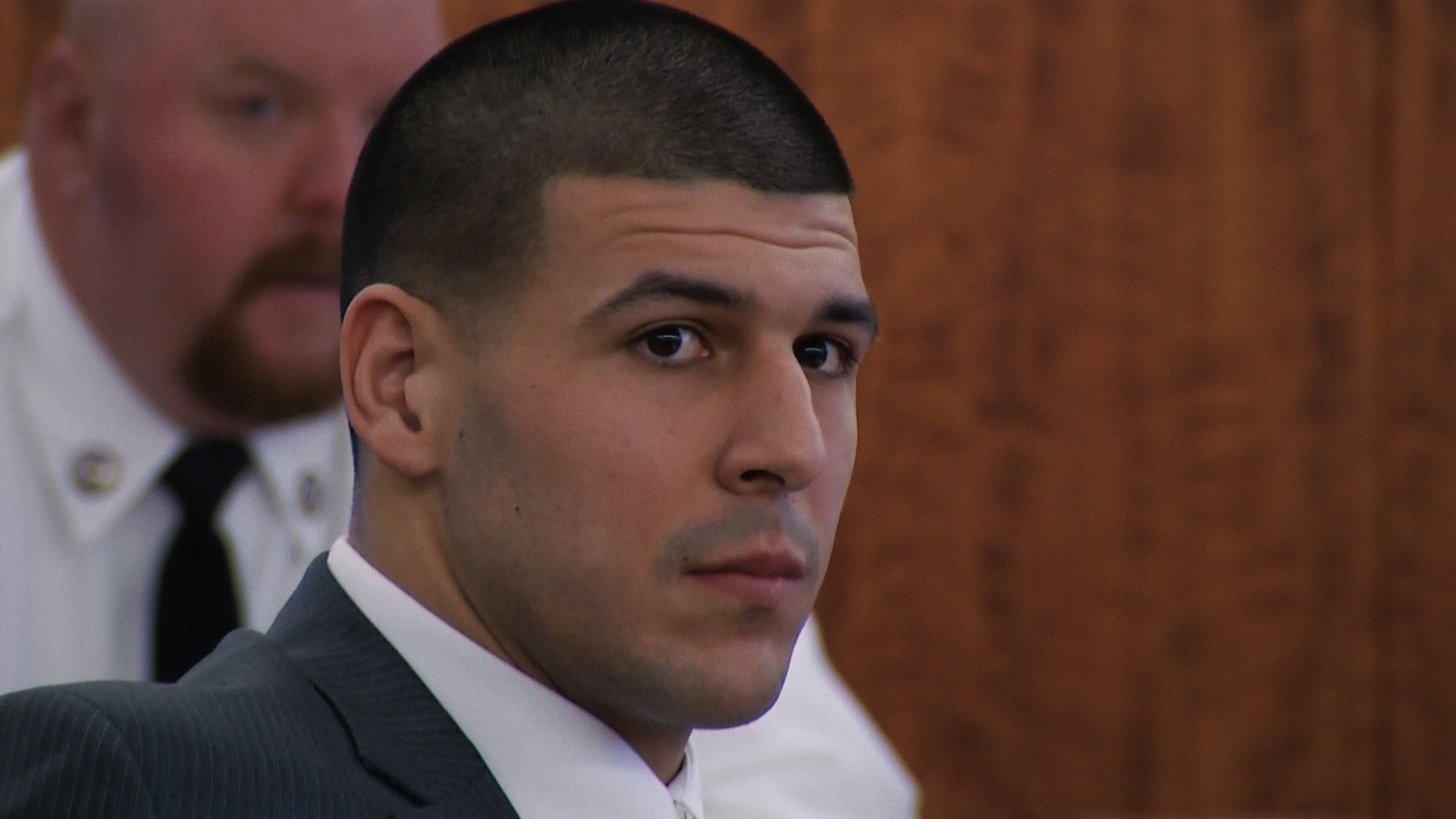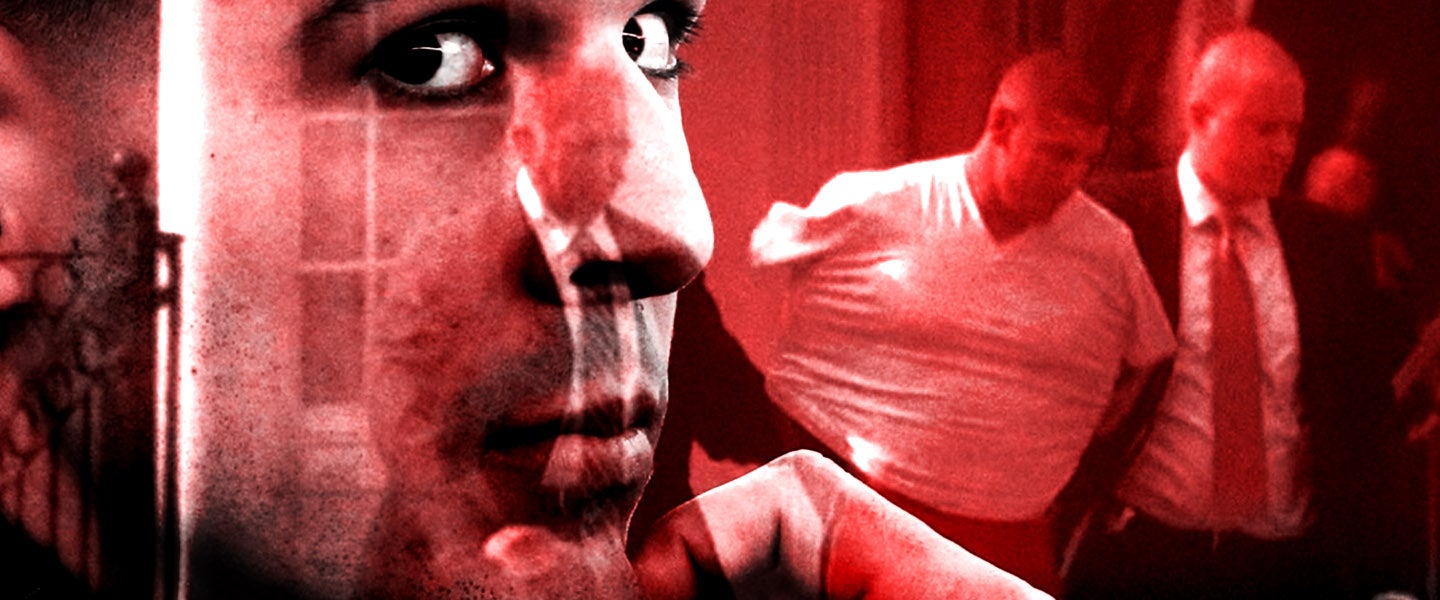When Aaron Hernandez took his life in prison in April 2017, at the age of 27, it was just the latest twist in a strange series of events that marked the young man’s descent from one of the NFL’s most dangerous receivers to being accused of several murders. Back in 2012, when he signed a contact close to $40 million, he seemed very much on his way to a Hall of Fame career as part of the New England Patriots, the sport’s dominant dynasty. Then, about a year later, everything fell apart: He was charged with the killing of Odin Lloyd, an associate who happened to be dating the sister of Hernandez’s fiancée, Shayanna Jenkins. Convicted and given a life sentence, Hernandez would later go on trial for another crime, one that had taken place earlier: a double-murder in Boston in July 2012, a shooting that occurred mere months after he had signed that massive contract.
He had everything — so why did he throw it away?
Geno McDermott has spent several years thinking about this question. A filmmaker and the founder of Blackfin, a production company specializing in nonfiction programming, he had begun working on a documentary about Hernandez in January 2017 as the disgraced athlete was preparing for trial for the Boston shootings. McDermott’s first stab at encompassing Hernandez’s life, the 87-minute documentary My Perfect World: The Aaron Hernandez Story, premiered at DOC NYC in December 2018. “I self-financed [that] film,” McDermott tells me by phone from New York, “and we’d just burned through a bunch of cash, and we needed to get it out there. At that point is when I started talking to Netflix — and it just so happened a lot of things started to become substantiated, like Aaron’s sexuality and CTE.”
The streaming company suggested he expand the project with Netflix’s backing. And so we now have Killer Inside: The Mind of Aaron Hernandez, a three-part series — each episode clocks in at about an hour — that offers a wider perspective on Hernandez’s upbringing, rise and fall. Featuring prison phone calls that Hernandez made to Jenkins, as well as others, the documentary series tries to put the viewer inside the athlete’s mindset — how he went from being a sweet, friendly kid growing up in Bristol, Connecticut, to someone who covered his body in tattoos and adopted a bad-ass persona off the field. Along the way, we also hear about the rumors that Hernandez was gay or bisexual — and learn about the severity of his brain damage from playing football. Killer Inside suggests that the death of Hernandez’s father, Dennis, when he was 16 may have left him unmoored as well — even though his old man was reportedly abusive and homophobic.
But were any of those the reasons that Hernandez became a killer?
Even after all this time, McDermott isn’t sure he has an answer — and he doesn’t want his film to, either. Several times during our conversation, he sidesteps direct questions about Hernandez’s possible motivations, preferring to let audiences make up their own mind. “It’s our job as filmmakers to be journalistic about it, and not present an opinion,” he says.
Still, it’s hard to watch Killer Inside and not think about how Hernandez threw away so much potential. (Not that we should necessarily sympathize with the convicted killer — McDermott makes sure we hear from those who knew Lloyd so that we feel the full weight and anger of that loss.) Increasing paranoia and troubling behavioral issues — scouts indicated Hernandez tested low on “social maturity” — contributed to his downfall. But can anyone truly say what made Hernandez commit these crimes? Below, McDermott discusses fans who delude themselves about their team’s favorite players, closeted athletes clinging to football to shield their sexuality and why CTE isn’t just a football problem.
Are you a football fan? Just curious if you knew about Hernandez before his arrest.
Well, I’m an athlete. I never played football, but I played varsity sports, and I’m a pretty big sports fan. I grew up just outside of Philadelphia, so I’m a Philadelphia sports fan. I watched the Patriots beat the Eagles in the Super Bowl when I was in college, and then I went to the Super Bowl where the Eagles beat the Patriots. [laughs]
So you understand the Patriots culture, which you talk about a little in Killer Inside. They’re this elite franchise… and then this happened. You show how fans stood by Hernandez, refusing to believe that one of “their guys” could do such terrible things.
I have a lot of friends that are New Englanders and huge Patriots fans — and, honestly, they’re used to winning. That’s what happens in New England — you can look at the Red Sox, too — and when something like this with Aaron Hernandez goes down, it’s almost unimaginable because when you’re winning so much, and when it appears that it’s a completely perfect and well-oiled machine, it’s shocking. But beyond the Patriots, I feel like if Aaron Hernandez was on any NFL team, it would be equally as shocking for someone to sign a contract like that and then to commit murder. So I don’t know if it’s totally isolated with the Patriots. It could be anywhere but, yeah, Patriots fans are used to winning and are used to having an ironclad image.
You show the image that we all remember — Hernandez being led out in handcuffs from his home, his shirt pulled over the handcuffs. It seemed like it helped solidify, in the public’s mind, that he was guilty — that he was just a common “thug.” It’s a very loaded image.
It’s a damning image, and it’s an iconic image that we had to put in there. That was a definitive moment where you’re like, “This guy’s in trouble.” Up until that point, he’s driving his car to the stadium — or you see him through the glass while the press is around his house when there’s all these allegations coming out — but until that moment, everyone who’s a sports fan is like, “There’s no way he’s involved in this stuff. He just signed a $40 million contract. How could he even do this? No way. This must be some sort of mistake.” That image of him coming out of the house in handcuffs, that right there is like, “All right, well, this is real. This is serious.” Even to that point, there were people who didn’t think he did it.
It’s natural to want to get to the bottom of exactly why Hernandez did what he did. There are plenty of possible explanations — maybe he was closeted, maybe it was CTE — but you seem uninterested in offering any sort of theory.
The way we handled it is, we present the facts in a very neutral way. We don’t say that there was any sort of motive because of one particular reason — it’s impossible [to do that] because we actually don’t know. All we could do is put forward the CTE research on Aaron’s brain, and put forward what we learned about his sexuality, and put forward what we learned about how Aaron changed after his dad shockingly and abruptly passed away. We just put it all out there, and it’s up to viewers to create their own opinions. It’s our job as filmmakers to be journalistic about it, and not present an opinion.
I do think the [prison] phone calls add even another element, because those phone calls are obviously not produced — some of them happened before we even started the project — and that’s truly unfiltered Aaron Hernandez right there, just talking [to friends and family]. So now you have even another perspective of what Aaron was like, and you hear his personality through the phone calls. Suddenly, you have now five, six, seven, eight elements of this story that you’re trying, as a viewer, to grapple with and make decisions on. It’s very hard to [draw a conclusion].

In one of those calls, he’s told, essentially, “You care too much about what other people think about you.” It seems like that’s a hint you’re putting across about what contributed to his downfall.
Honestly, we don’t really know. That call is with his fiancée, Shayanna Jenkins, and obviously she spent the most time with him in his later years. On their calls, they would have a lot of psychological back-and-forth, psychoanalyzing each other. It’s tough calling your loved one in prison and trying to keep a connection going with them. So I don’t think that call right there is something where we can judge Aaron’s personality. But if you listen to the calls — and you hear some of what [our] other interviews said — that could have been one of his issues, that he cares about what other people think. But, of course, there’s a little bit of everyone that cares about what other people think [of them].
One of your interview subjects, Ryan O’Callaghan, is especially revealing. He’s a former Patriot who later came out as gay. Hearing about what his time in football was like — that he made himself, as he puts it, fat and ugly so nobody would wonder why he didn’t have a girlfriend — is heartbreaking. It seems like there have to be more gay players than we know.
If you ask Ryan, he would say that there are other players that are closeted — they aren’t coming out because they’re worried about their contracts or what their teammates will think. We felt like in order for us to understand what it might’ve been like for Aaron to be in the NFL — and even in college locker rooms — we [had to] interview Ryan, because we felt like he could offer us that perspective. And Ryan himself played for the Patriots — not with Aaron, but he was there — so Ryan was able to give us this perspective that we really, really thought was interesting.
You’d never think that someone would go to that length to hide [his sexuality]. But I guess the financial pressures and the social pressures of being on those teams make it so. Ryan will even go as far as to say he’s not even sure he liked football that much. He calls [football] his beard to hide his sexuality. He kept pushing himself — through many, many, many injuries — to keep the beard, to keep hiding himself. And it’s really sad and tragic that he had to do that.
Just the idea that O’Callaghan was desperate to latch onto something that symbolized heterosexual, super-masculine male culture to keep his sexuality secret…
Yeah, there’s only so much we can include in a series that’s not really about Ryan, but the anecdotes and stories that he put forward are insane. I think that’s one of the messages in this doc series: As an American culture, we need to have this conversation, even when kids are younger and first start playing sports. We don’t want people hiding what they feel in the same way that Ryan had to do for his whole life.
Obviously, CTE is part of this story. But if you’re not suggesting that it contributed to Hernandez’s homicidal behavior, why did you feel it was important to mention?
We’re not tying CTE to the murders or anything like that — it’s not a motive that we’re putting out there. We’re basically presenting CTE as something that Aaron did have, and something that Junior Seau had, to keep that conversation going. There are tons and tons of former NFL players — and current NFL players and even college players — that have CTE or will get CTE, but it doesn’t mean that they’re going to murder people. We’re not tying the two together, but it’s something that Aaron did have, and we felt that needed to be included in the doc series.

Has CTE made it harder for you to keep watching football?
Well, I always liken it to some of the sports that I played growing up. I played lacrosse, where you’re instructed to hit people running full speed. I remember some instances where I either had a concussion or I was really out of it for days. There was never really a conversation — it was never something where I was being brought into a room and being tested. It was just like, “Hey, you’ll shake it off in a couple of days,” and they shine a light in your eyes.
So I don’t think it’s just a football issue — it’s a sports issue. In soccer, we had certain players who had chronic head-injury issues all the time, and there had to be certain precautions put in place so they stayed safe. CTE is real, and more people probably suffer from it than we think, and we need to talk about it.
Killer Inside references O.J. Simpson, another football star accused of murder. I was thinking how your film, like O.J.: Made in America, isn’t just about an individual but also a society.
There’s obvious parallels to draw between the two [films]. I remember watching O.J.: Made in America, and it was an amazing doc series — I thought it was really well done. I think ours is much different — obviously, the story’s very different, and the subject is different. And we had certain challenges because Aaron was playing in the NFL when he was convicted, and so access is tough [for a filmmaker] the closer you are to things happening.
But I think what ours does really well is we’re able to really paint a picture of who Aaron was, and get a sense of his personality, which makes you second-guess everything. A lot of those [prison] calls, he’s a big personality. Someone in [the film] says Aaron lit up a room — he was always playing jokes on people, he was a great guy — and then you cut to one of the phone calls, and it supports that. And then you cut to somebody else talking about his anger issues, and then you cut to [another] phone call, and you see him getting angry over something so minimal. We were able to make Aaron be a character, even though he’s no longer with us.
What emerges in the film is that Hernandez, who’s portrayed as a pretty sweet boy, eventually longed to be a “gangster.” The tattoos, the clubbing when he went to the University of Florida: It was almost as if he was trying to play into the stereotypical “thug” lifestyle. Like he wanted to remake himself into this harder persona.
A way to look at that is through the phone calls. You see how he talks to Shayanna — or his mom and his family — and he has a certain way that he talks. Then you start to look at other people he talked to on the calls — players from the football world or friends — and he totally changed his tone. He changed his slang. He changed everything.
It’s fascinating, because it does play into his double life. He was this kind of perfect American athlete during the day — it didn’t seem like he had tons of on-the-field issues with the Patriots — but after he left [the Patriots facility], he turned into this, like you said, wannabe gangster. He wanted to live this dark life at night, and that’s ultimately what got him in trouble.
Your original film was called My Perfect World, a bitterly ironic title considering what became of Hernandez.
He had a tattoo that said “My Perfect World,” but Aaron’s perfect world was living a double life. He wanted the millions of dollars. He loved football. He wanted to play football. He wanted the big house. He wanted to be untouchable, just like anybody would. But he also had a craving at night to have respect from gangsters and be in this dark underworld. That was our interpretation of that tattoo.

Killer Inside suggests that Hernandez losing his father was a heavy blow, sending him on a downward spiral from which he never recovered. But his dad was abusive and a homophobe. You could argue that, if anything, maybe being free of such a man would have helped Hernandez. But that’s not how things turned out.
His dad was his structure, and it felt like, when his dad passed away, he lost his structure and he lost his guidance. That’s when it seemed like he started just making very rash decisions, like deciding to be a [Florida] Gator, instead of his commitment to UConn to play with his brother. He left high school early. Maybe his dad would have kept him in high school to finish out and get his diploma. I see what you’re saying: There could be an argument that if his father wasn’t around, maybe he would’ve never [gone down the road that he did]. But the only people that will know are the Hernandezes.
You’ve said that you wanted to be journalistic, not offering an opinion, but you’ve spent years making this movie and thinking about Aaron Hernandez. Where do you land on him?
I don’t have a definitive feeling, one singular feeling. If you look at the series, it’s such a dichotomy of elements. Every time you make a decision [about Hernandez], you’re like, “Oh, what about this?” Once you’re like, “All right, that’s it, that’s the reason why this all went down,” you think about another [element of Hernandez’s life]. I guarantee you that a lot of people watching this doc series — even a lot of fans from New England — they think they read a couple articles and they know the whole story. I think this series will really shock them.

